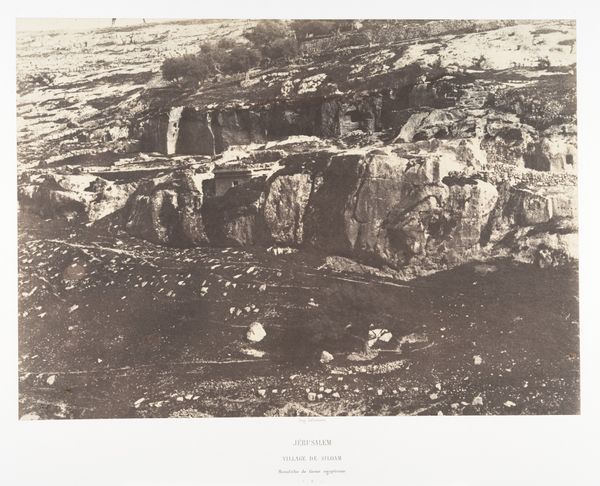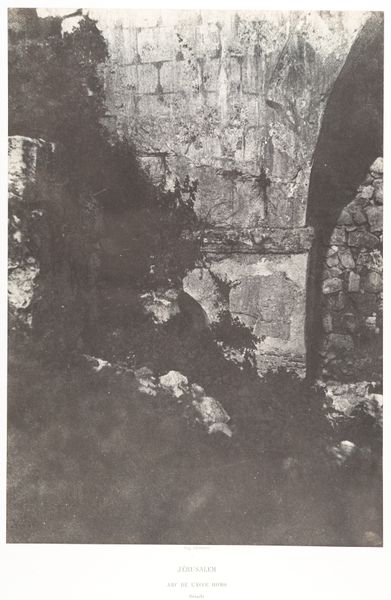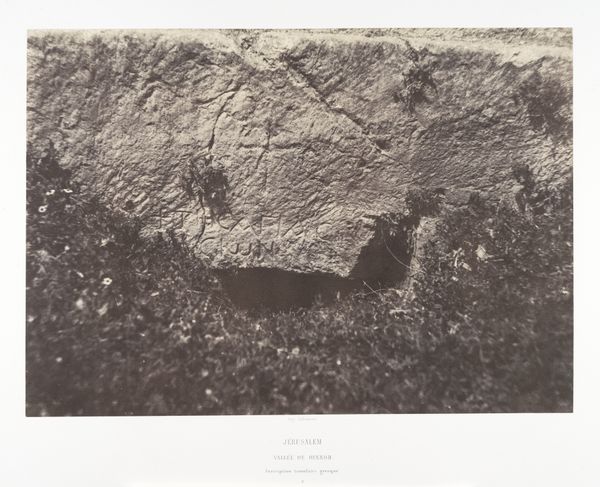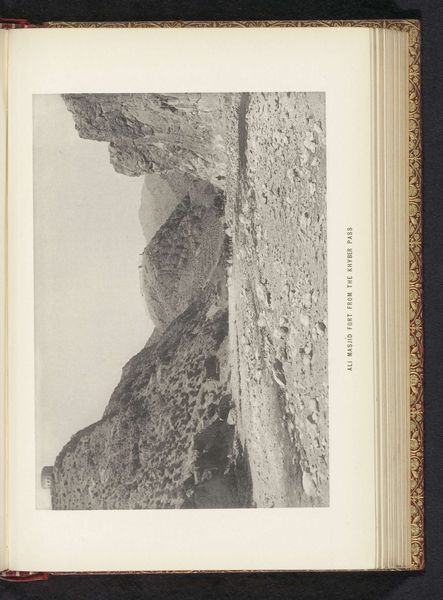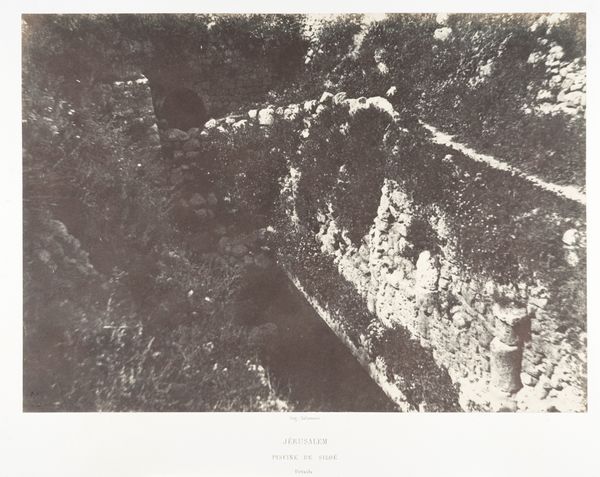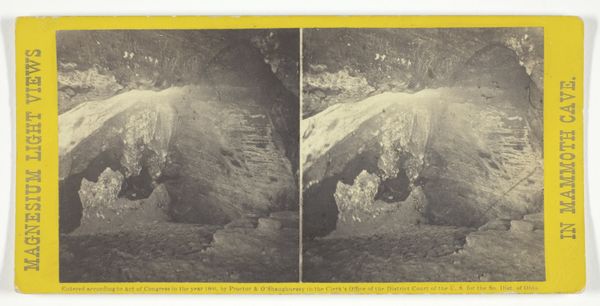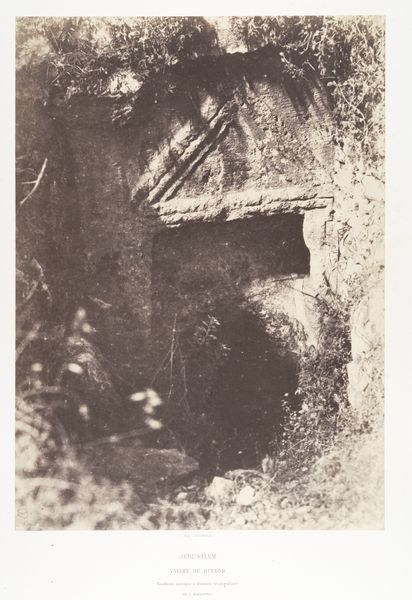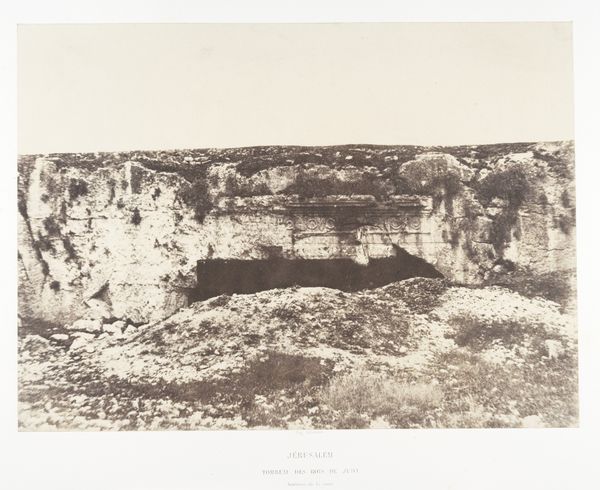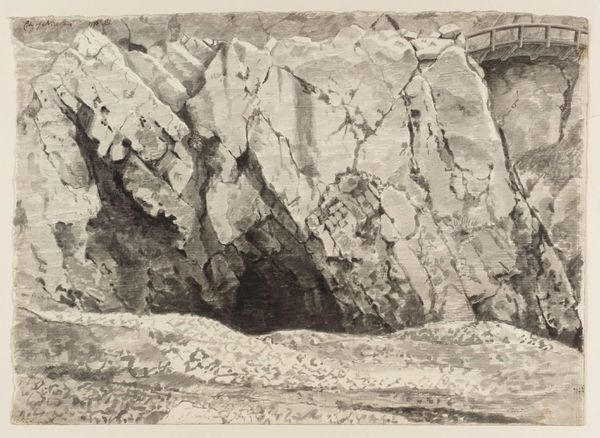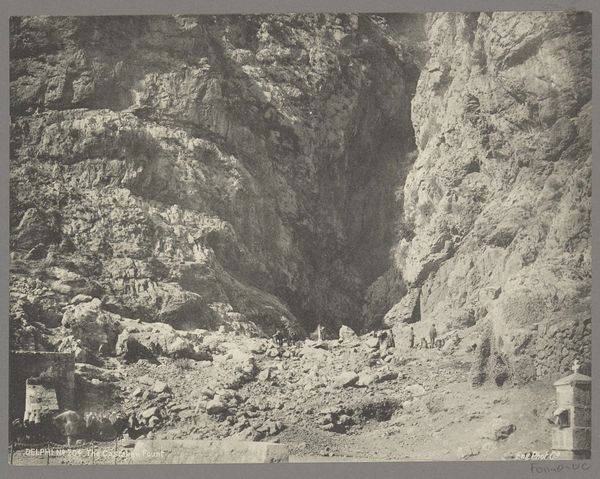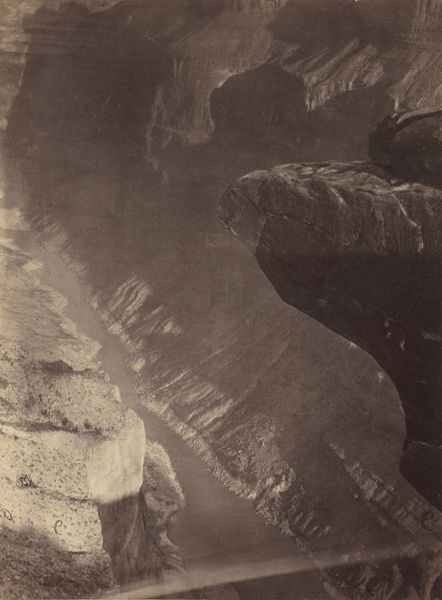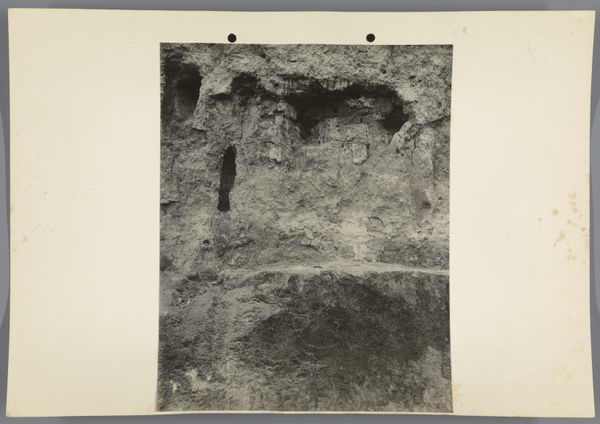
Jérusalem, Piscine de Siloe, Canal taillé dans le roc 1854 - 1859
0:00
0:00
daguerreotype, photography
#
landscape
#
daguerreotype
#
photography
#
orientalism
#
realism
Dimensions: Image: 22.7 x 32.3 cm (8 15/16 x 12 11/16 in.) Mount: 44.6 x 60 cm (17 9/16 x 23 5/8 in.)
Copyright: Public Domain
This photograph of the Pool of Siloam in Jerusalem, taken by Auguste Salzmann, presents a stark image of ancient stonework, hewn directly from the rock. The pool, a site of ritual purification and healing, carries deep symbolic weight. Water, a universal symbol, signifies cleansing, rebirth, and the very source of life. Across cultures, from ancient Mesopotamian ziggurats to Renaissance fountains, water features prominently in sacred and civic spaces. The act of drawing water, as depicted here in this ancient reservoir, evokes a connection to primordial sources and a sense of continuity with the past. Note how the light filters into the cavernous space, illuminating the rough-hewn walls. This interplay of light and shadow, is reminiscent of Plato’s cave, a metaphor for enlightenment. Perhaps, Salzmann captured the site not merely as a historical artifact, but as a symbol of spiritual awakening. The image resonates with our collective memory, reminding us of the enduring human quest for understanding and purification.
Comments
No comments
Be the first to comment and join the conversation on the ultimate creative platform.
